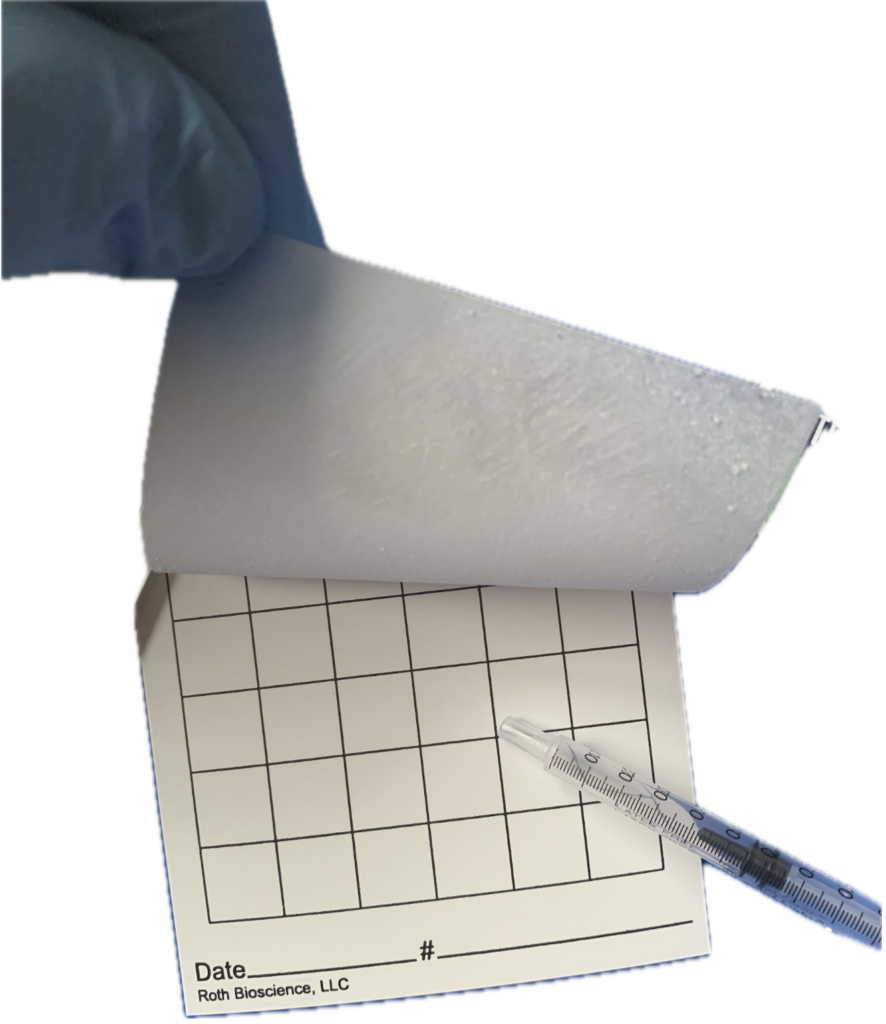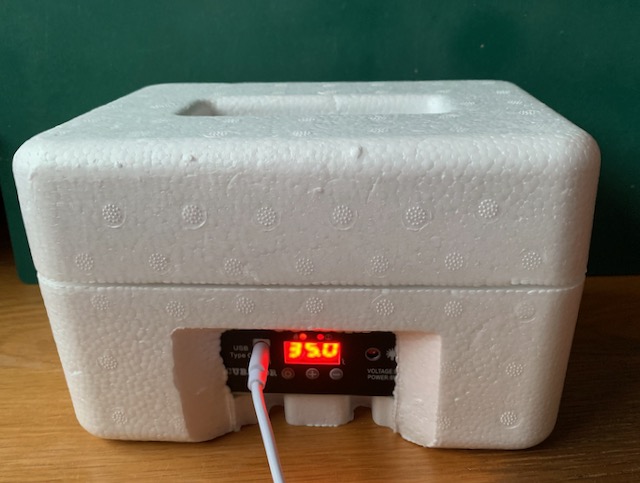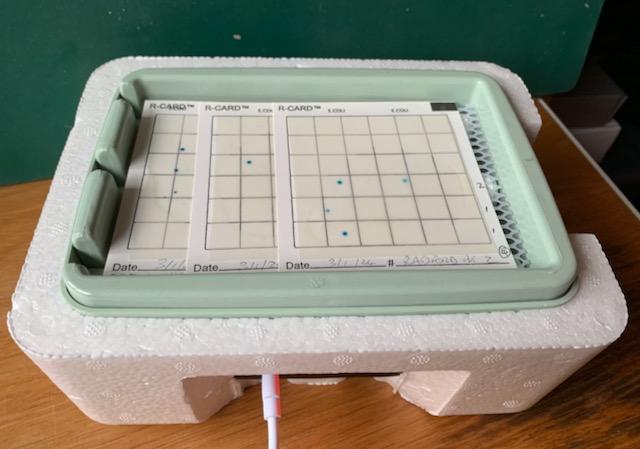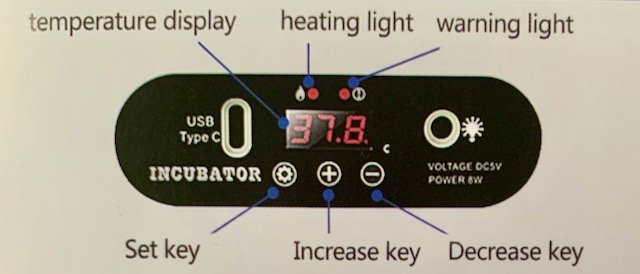E.coli sampling with R-Cards™
Guidance on using R-Cards™ for E.coli sampling
Water Rangers has developed a comprehensive sampling kit and protocol to guide volunteer testers in obtaining consistently reliable results.
As an alternative, we have adopted the ROTH R-Card™ rapid test method. This approach allows volunteers to process samples at home using a small, cost-effective incubator and report their findings. The R-Cards provide a reliable indication of E. coli levels in the samples. Their affordability enables multiple tests to be conducted, helping to identify potential ‘points of interest’ before employing more precise testing methods.
Preparing to Test
Before initiating testing, ensure that you have prepared your kit, identified your testing location, and established the timing for both testing and incubation.
The Kit

Water Rangers has curated a sampling kit and protocol to assist volunteer testers in achieving consistently reliable results.
The Kit consists of:
- A sampling tray to allow the cards to be laid out and kept level – important whilst the sample is being applied to the R-Cards.
- A notebook to record qualitative observations as part of the sampling activity.
- A combined conductivity and water temperature meter.
- A sampling cup.
- A ‘reacher’ stick to assist in collecting the sample.
- Protective gloves.
- Sampling bags containing three R-Cards and a 1mL syringe – one bag per location and testing event.
- A small towel.
- A ‘personal’ incubator to be used at home.
- A conductivity meter
The sampling bags will be provided for a month’s test – normally 5 bags each month.
About R-Cards™
The R-CARD™ consists of a “bottom piece” (3½ in. X 4 in. with printing and ½ inch imprinted squares), a clear film “top piece” that contains a powder formulation on the underside, and a text imprint at the top indicating the formulation type (e.g. E. Coli ). The “top piece” is pre-attached to the bottom piece.
Based on technology that involves dry components attached to a card, there are a couple of general things that should be kept in mind, which are common to most products of this nature.
- They should be kept dry and out of highly humid environments. If they become wet, they will
become unusable. - It is preferable that the cards not be subjected to high intensity light or heat.
With these things in mind, it is best to keep R-CARDS in the sealed bags in which they were delivered. That does not mean that they cannot be exposed to normal conditions for days or weeks where temperatures do not exceed 40 degrees Celsius or where humidity is normally less than 100%.
For best performance, cards should be kept frozen until required for sampling.
E. coli sampling with R-Cards™
Prepare your kit
- Put on gloves
- Label each card with the date and location information and the number of each card (1-3)
- Fill out your survey for environmental and other parameters
- Lay out the R-Cards in the tray: make sure they are level
Sampling
- Rinse the sample cup 3 times
- Collect the sample 15cm below the surface, or as deep as possible without including sediment.
- Fill the syringe to the 1mL mark (tap out any air bubbles!).
- Gently lift the film and squirt water onto the card.
- Roll the film down onto the sample, allowing the water to spread into a circular pattern between the film and the card. The water should be within the area of the top film but doesn’t need to cover the entire area. DO NOT press the film down… allow it to spread.

- Repeat for each of the three cards for one location using the same sample.
- Allow the R-Cards to seal (1-2 minutes) then place into the bag and seal.
Processing
- Keep the cards out of direct sunlight and keep cool. Use a cool pack if it’s warm weather but DON’T put the cards on ice.
- Switch on the Incubator and allow it 20 minutes to warm up to 35 °C .
- Cards should be placed in the incubator within 3 hours of collection.
- Incubate the cards for 24 hours before counting the colonies.
- Average the result for the three cards, then multiply by 100 to report Colony Forming Units (CFU) per 100mL.
Incubate your R-Cards

As part of the R-Card test kit, we provide a ‘home incubator’ which is a small USB-C powered unit originally designed for home incubation of small eggs. This allows a controlled and consistent incubation temperature.
Set the incubator temperature to 35deg C (it defaults to 37.8 deg), and allow it to warm up to that temperature before putting in the R-Cards.
Count results at 24 hrs. after placing the cards in the incubator.
Do not count any colonies that may develop after 48 hrs. as the E. coli and coliforms that you are monitoring are very fast growing and will definitely be visible within that time period.
The cards should be placed printed side up, and can be stacked on top of each other.

Caring for your incubator
The incubator comes with some additional items such as rollers and water bottles for hydrating the eggs – these are not required for incubating the R-Cards and can be kept aside.
The incubator is encased in styrofoam which helps retain heat and minimize energy costs, so keep that in place.
The incubator should be cleaned before each use with a weak bleach or anti bacterial solution.
Interpreting your results: How can we measure health risks at the beach using E.coli?
The concentration of E.coli in a water sample is typically measured per 100ml. Methods to measure E.coli include membrane filtration (CFU), multi-tube fermentation (MPN), and more rapid processing methods like qPCR methods.
In Canada, the federal government guidelines, Guidelines for Canadian Recreational Water Quality, for E.coli are the following:
E.coli Guidelines for Primary-Contact Recreation∗
- Geometric mean concentration (minimum 5 samples) ≤ 200 E. coli /100 mL
- Single sample maximum concentration ≤ 400 E. coli /100 mL
Countries, states, and provinces have their own standards and protocols, but most are very similar when it comes to quantifying E.coli at the beach.
The thresholds for E. coli in English bathing waters:
- Excellent: E. coli threshold is ≤500 Colony Forming Units per 100mL (CFU/100 mL)
- Good: E. coli threshold is ≤1000 CFU/100 mL
- Sufficient: E. coli threshold is ≤900 CFU/100 mL
- Poor: E. coli values are worse than the sufficient threshold
In Scotland the values are:
- Excellent: E. coli threshold is ≤250 CFU/100 mL
- Good: E. coli threshold is ≤500 CFU/100 mL
Recording results
The averaged results can be recorded using the Water Rangers app or web page. Annotate the observation record as using an R-Card. These results are available at waterrangers.com/community-lab-results.
For the River Wey testing groups you can enter your results at https://forms.gle/H8u1WaEMM5i6v1qz8 and these results are shown at riverweytrust.org.uk/waterquality.
How-to video from Kentucky Watershed Watch
Feedback? We want to hear from you.
We’d love to hear about your experience and get feedback on your experience with the E. coli testkit. Your responses will help us improve the kit and our training process. All responses are confidential and will be used solely for program improvement.

